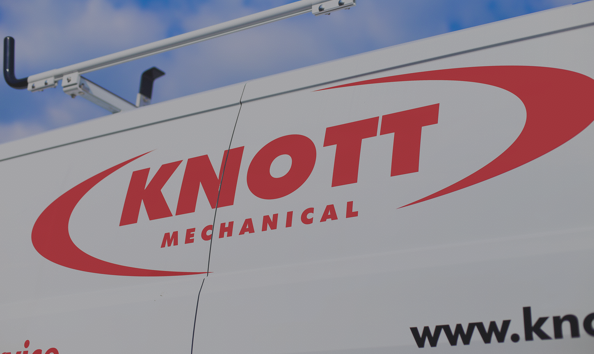Go Back to Career Paths
Career Developmental Objectives
HVAC Installation Technician II’s must consistently demonstrate the following:
Duct work.
- Must be able to put duct work together and properly seal it.
- Must be able to insulate and hang it.
Flex duct diffusers and grills.
- Must know how to run, hang and connect flex duct and different kinds of diffusers.
Hang equipment.
- Must know the best place to hang equipment so that it can be serviced.
- Must know how to hang equipment in concrete and bar joist.
Brazing and soldering.
- Must know how to braze and solder different types of material.
- Must know what type of brazing rods to use.
- Must know how to use nitrogen inside of pipes to keep pipe clean.
Air balance.
- Must be able to use flow hood and adjust dampers to give proper flow to each diffuser.
- Must be able to calculate total unit cfm to make sure ductwork is designed properly.
Condensate drains.
- Know how to size and run condensate lines.
- Know how to size traps and install clean-outs and check valves where needed.
- Must know how to run condensate pump discharge line.
Gas pipe.
- Must know how to run gas pipe and install drip legs, unions, regulators and supports as needed.
- Needs to know how to install an inverted trap on vents for regulators.
- Need to be able to adjust gas pressure going to unit when using a regulator.
Flue pipe.
- Must know how to install flue pipe.
- Must know proper size and pitch of pipe.
- How to install draft hoods dampers and draft dampers.
- Also must know how to size and install PVC flues for condensing furnaces.
Pressure test refrigerant systems.
- Must know how to pressure test and leak check systems with nitrogen.
- Must know how to use different types of leak detectors.
Reclaim refrigerant.
- Must know how to properly reclaim weigh and return used refrigerant.
- Must have CFC license and know how to log the refrigerant into the computer.
Evacuation.
- Must know how to evacuate a system down to the proper micro level.
- Must know how to break the vacuum with nitrogen.
- Must know how to maintain vac pump and when to change the oil.
Low voltage wiring.
- Must know how to wire both conventional and heat pump thermostats.
- Must know how to wire smoke detectors and remote sensors.
- Should be able to reach schematics.
- Need to know when to use plenum wire.
High voltage.
- Must know how to wire units neatly and to code.
- Must know how to lock out tag out and work on units safely.
Cooling
- Consider your basic to advanced ability to maintain, service and repair a variety of cooling systems to include the following:
- DX and chilled water equipment including RTU’s, split systems, self-contained water cooled, ductless splits/VRF systems, chillers, cooling towers, dry coolers/ evaporative coolers and WSHP’s.
Air Distribution:
- Consider your basic to advanced ability to maintain, service and repair a variety of air distribution systems to include the following:
- VAV/VVT systems, ERV’s/HRV’s, fans/blowers, ductwork, dampers, air filtration, airflow measurements and air quality measurements.
Electrical/Controls
- Consider your basic to advanced ability to maintain, service and repair a variety of electrical and control devices to include the following:
- Mechanical electrical components (contactors, transformers, fuses etc.), solid states components, motors, motor controls, VFD’s, DDC, pneumatic controls, thermostats, unitary control hardware/software and building automation systems.
Heating
- Consider your basic to advanced ability to maintain, service and repair a variety of heating systems to include the following:
- Gas and oil fired equipment including forced air furnaces, WSHP’s, electric heat, humidifiers, water and steam boilers, direct/indirect fired MUA’s & ARU’s and venting requirements.
All requirements of HVAC Installation Tech II
- Advanced understanding and basic troubleshooting skills on all types of equipment we install.
- Ability to read and understand factory O&Ms
- Ability to read prints and layout ductwork, piping, and unit location based on blueprint values
- Safely and proficiently operate specialty equipment such as scissor lifts, articulating boom lifts, petty boom lifts, fork lift trucks, and specialty tools such as gas powered cut saws etc.
- Be familiar with industry nomenclature and have knowledge of the different types of fastening and equipment mounting systems that are on the market
- Advanced understanding and basic troubleshooting skills on all types of equipment we install
- Ability to read and understand factory O&Ms
- Ability to read prints and layout ductwork, piping, and unit location based on blueprint values
- Safely and proficiently operate specialty equipment such as scissor lifts, articulating boom lifts, petty boom lifts, fork lift trucks, and specialty tools such as gas powered cut saws etc.
- Be familiar with industry nomenclature and have knowledge of the different types of fastening and equipment mounting systems that are on the market





 John Ayd
John Ayd Joe Pyles
Joe Pyles

